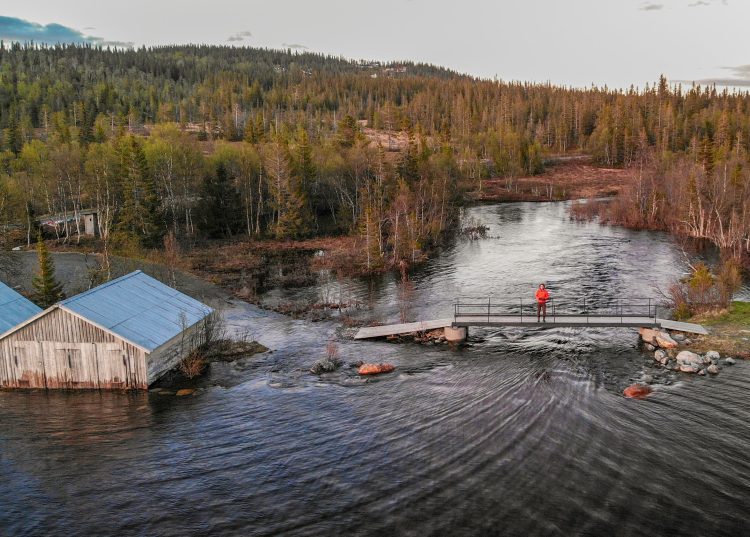Designing a landscape in Ontario, Canada, presents both exciting possibilities and unique challenges. From the cold, snowy winters to the humid summers, Ontario’s diverse climate demands a thoughtful approach to creating a landscape that is not only beautiful but also practical. Whether you’re working on a suburban garden, a rural property, or an urban space, understanding the local climate and selecting the right plants, materials, and features will ensure that your landscape thrives year-round.
Here’s how you can design a landscape that complements Ontario’s climate:
1. Know Your Hardiness Zone
Ontario spans several plant hardiness zones, so understanding your specific zone is the first step to selecting the right plants. Most of Ontario falls within USDA Hardiness Zones 4-6, with some areas (especially in the southern parts) reaching zone 7. Plants suited to these zones are more likely to survive the winter frost and other extreme weather conditions.
- Zone 4: Cold-hardy perennials, shrubs, and trees.
- Zone 5: Plants that can tolerate cold winters but require a slightly warmer climate.
- Zone 6: Mild winters allow for a broader range of plant choices, including some more tropical varieties.
You can find your hardiness zone through online resources or by consulting local gardening centers, ensuring that you choose plants that will thrive in your area.
2. Incorporate Native Plants
Native plants are an excellent choice for Ontario landscapes. These plants are adapted to the local climate, requiring less water, fertilizer, and pest control. They also help maintain local biodiversity by supporting local wildlife, such as pollinators, birds, and small mammals.
Some popular native plants for Ontario include:
- Trees: Sugar maple, white oak, and black cherry.
- Shrubs: Serviceberry, highbush cranberry, and dogwood.
- Perennials: Coneflower, black-eyed Susan, and bee balm.
By incorporating native plants, you’ll not only create a beautiful garden but also contribute to the health of the local ecosystem.
3. Consider Seasonal Changes
Ontario experiences all four seasons, each with its own set of challenges. To ensure your landscape looks appealing year-round, focus on plants and features that provide interest in each season.
- Spring: Early-blooming flowers like crocus, daffodils, and tulips can add a splash of color to your garden after the snow melts. Consider planting flowering shrubs, such as lilacs and forsythia, for added visual interest.
- Summer: Summer brings warm weather, and this is when your garden will be at its most vibrant. Choose plants that bloom in the summer months, such as lavender, daylilies, and roses.
- Fall: Autumn foliage is a highlight in Ontario, especially with trees like maples turning vibrant reds and yellows. Plant deciduous trees and shrubs that offer stunning fall colors, such as red maples or sumac.
- Winter: While snow may blanket much of Ontario in the winter, evergreen trees and shrubs can provide structure and color during the colder months. Consider incorporating evergreens like pines, spruces, and cedars into your design.
4. Design for Winter Resilience
Ontario’s winters can be harsh, with temperatures frequently dipping below freezing, snowstorms, and even ice storms. When designing your landscape, think about how to protect and enhance your space during the cold months.
- Windbreaks: Consider planting evergreen trees along the edges of your property to protect your home and other plants from cold winds and snowdrifts.
- Snow management: Plan your garden’s layout with snow accumulation in mind. For example, plant trees in ways that help divert snow away from pathways and structures. You might also want to add hardscaping features, like patios or retaining walls, to direct snow in a controlled way.
- Winter-interest plants: Include plants that provide visual interest in winter, such as red-twig dogwood, which has striking red branches, or ornamental grasses that stand up well to snow.
5. Use Sustainable Practices
Ontario’s climate is changing, with unpredictable weather patterns and longer periods of extreme temperatures. Designing a sustainable landscape can help conserve resources, reduce your environmental footprint, and ensure your garden thrives in the long term.
- Water conservation: Ontario can experience both wet and dry periods, so choosing drought-tolerant plants or incorporating rain gardens can help manage water use. Installing rain barrels or using drip irrigation systems can also make watering more efficient.
- Soil health: The soil in Ontario can vary significantly depending on location. Improving soil health through composting and using organic fertilizers can help your plants thrive in both heavy clay or sandy soils.
- Mulching: A thick layer of mulch around plants helps retain moisture in the soil, insulates plant roots during winter, and suppresses weeds. Use organic mulch such as wood chips or straw.
6. Consider Microclimates
Ontario’s landscape includes a variety of microclimates. Factors such as elevation, proximity to bodies of water, and sunlight exposure can create areas with slightly different growing conditions than the broader region. For example, southern-facing slopes tend to be warmer and drier, while shaded areas may be cooler and more humid.
When designing your landscape, take these microclimates into account. Place sun-loving plants in areas that receive the most sunlight and consider creating sheltered spots for more delicate plants. Even in the harshest Ontario winters, you can have success by designing for the specific conditions in each part of your property.
7. Embrace Hardscaping
Hardscaping features such as patios, walkways, retaining walls, and outdoor living spaces are important additions to any Ontario landscape. Not only do they provide structure and functionality, but they also enhance the overall aesthetic and usability of your yard.
In Ontario, where weather can be unpredictable, it’s essential to use durable materials that can withstand snow, ice, and freezing temperatures. Opt for concrete, flagstone, or brick for walkways, and choose durable materials for fences and garden structures that won’t be damaged by harsh winters.
Designing a landscape for the Ontario climate requires careful planning and consideration, which is why we suggest working with a professional Hamilton Landscaping company like Monarch Landscaping. By selecting hardy, native plants, preparing for the seasonal shifts, and incorporating sustainable design practices, you can create a landscape that is not only beautiful but also functional throughout the year. Whether you’re looking to create a tranquil garden retreat or a vibrant family-friendly space, the key to success lies in working with the Ontario climate, not against it.
So take time to plan, choose a professional landscaper wisely, and enjoy the beauty of your landscape no matter what the season brings.









